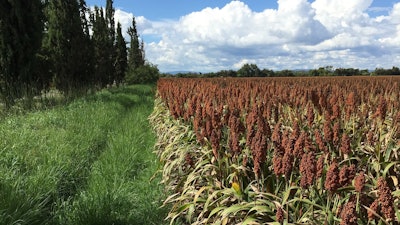
The latest Economic Research Service Feed Outlook for November 2024 reveals a complex and challenging landscape for the U.S. coarse grains market. Despite some positive developments in sorghum production, the overall forecast for 2024/25 U.S. coarse grain supply has been lowered, primarily due to decreased corn yields. This report highlights the delicate balance in the agricultural sector and its potential implications for farmers, livestock producers, and consumers.
Corn production: A significant decline
The U.S. corn production forecast has been reduced by 60 million bushels to 15.1 billion bushels for the 2024/25 marketing year. This reduction stems from a decrease in the national corn yield, which has been lowered to 183.1 bushels per acre from the October forecast of 183.8 bushels per acre. The harvested area remains unchanged at 82.7 million acres.
Key state-level changes in corn yields include:
Illinois: Lowered to 218 from 222 bushels per acre
Iowa: Down 1 bushel per acre to 213
Nebraska: Reduced from 196 to 194 bushels per acre
However, some states saw yield gains:
Indiana: Raised to 209 bushels per acre from 202
North Dakota: Exhibiting a 5-bushel-per-acre gain to 149
Ohio: Picking up 2 bushels per acre to 185
These changes have resulted in a net decrease of 0.7 bushels per acre nationally, bringing the total supply estimate down to 16.9 billion bushels. Despite this monthly decline, 2024/25 corn supplies are still expected to exceed 2023/24 levels by nearly 200 million bushels.
Sorghum: A bright spot in the coarse grains market
In contrast to corn, sorghum production has seen a boost. While harvested sorghum area remains unchanged at 5.3 million acres, yields have increased significantly to 60.8 bushels per acre from 57.7 bushels per acre. This yield increase has raised production by just over 16 million bushels to 320.7 million bushels.
Although this yield is higher than the past two years, it’s still below the historical average. However, the increase more than compensates for the year-over-year reduction in area, bringing supplies higher than the previous two years at 351.3 million bushels.
Global outlook: Mixed signals
The global coarse grains production forecast for 2024/25 is 0.4 million tons lower this month, at 1,499.7 million tons. While U.S. coarse grains production is down, foreign coarse grain output is projected 0.7 million tons higher. Higher foreign corn output is partially offset by decreases in foreign barley, sorghum, and millet production.
Notable changes in the global market include:
Increased corn output in Sub-Saharan Africa, particularly in Uganda
Reduced sorghum and millet production in Sudan and Nigeria due to ongoing conflicts and drought conditions
Lower corn output forecast for Mexico due to extreme drought conditions affecting winter crop plantings
Decreased corn production in the EU, particularly in Bulgaria
Reduced barley production in Russia, reaching its lowest level since 2013/14
Market implications and price forecasts
Despite the tightening supplies, the season-average price received by U.S. corn farmers remains unchanged at $4.10 per bushel. For sorghum, the price forecast also holds steady at $4.10 per bushel.
However, the all-barley 2024/25 season-average price forecast was raised by $0.10 per bushel to $6.60 per bushel. This increase is driven by continued firm malt-barley prices, with the average malt-barley price over the first four months of the 2024/25 marketing year being the second-highest on record.

















